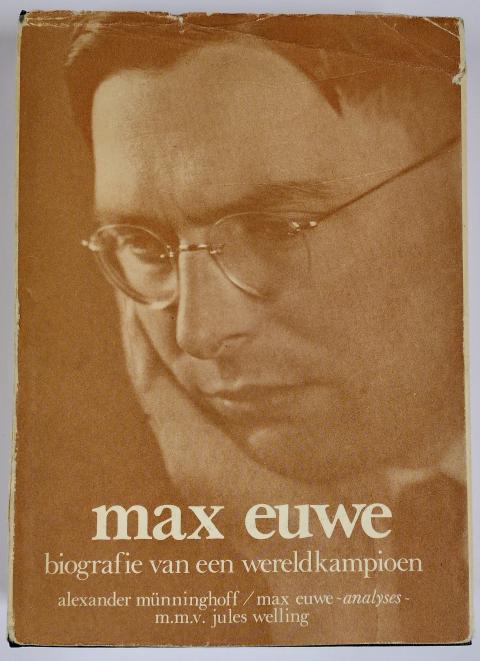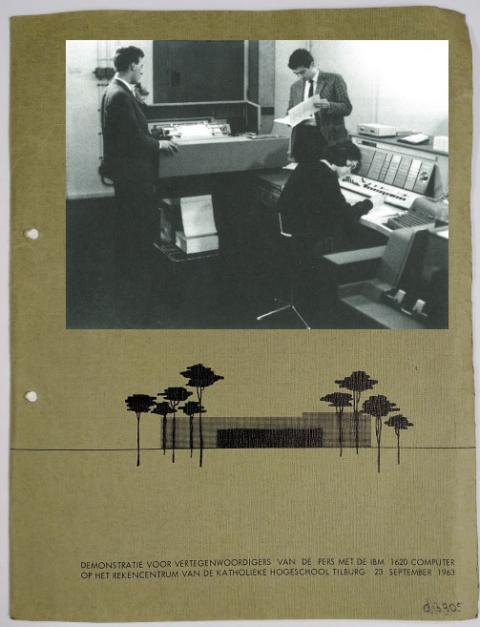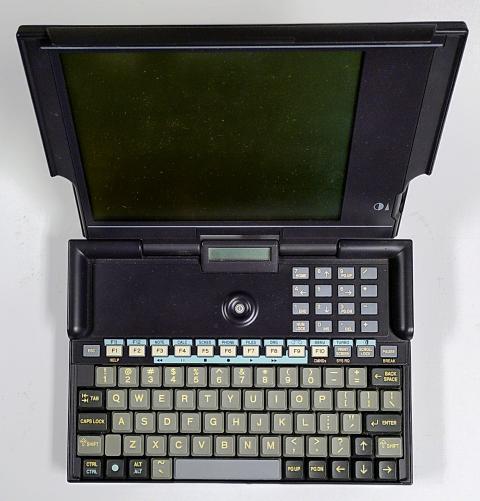Emergence and significance of computers
On the second floor of Goossens Building, you can find a kind of museum, a small room with all kinds of equipment. This comes from the former computer center and from the contents of the also no longer existing audiovisual center (both have become part of LIS, the Library and Information Services).
What is missing from this mini museum is the very first computer on campus, an IBM 1620. This was an extremely expensive scientific computer, which had come on the market in America in 1959 and which until then could only be found in the Netherlands at the Delft and Eindhoven technical universities. The accompanying punch card machine is still there, as is the manual for the IBM.
Its purchase made the front page of Het Nieuwsblad van het Zuiden (the predecessor of today's Brabants Dagblad). On July 13, 1962, the newspaper reported the arrival of a "mechanical memory." And: "In new hogeschool computing center with computer arrives." This "first mechanical brain" in Tilburg was primarily intended for "scientific calculations in the field of operations research, particularly linear programming and simulations." But perhaps, the newspaper wrote, business could also make use of it.
Its purchase made the front page of Het Nieuwsblad van het Zuiden (the predecessor of today's Brabants Dagblad). On July 13, 1962, the newspaper reported the arrival of a "mechanical memory." And: "In new hogeschool computing center with computer arrives." This "first mechanical brain" in Tilburg was primarily intended for "scientific calculations in the field of operations research, particularly linear programming and simulations." But perhaps, the newspaper wrote, business could also make use of it.
Max Euwe
That Tilburg purchased such a device had everything to do with a Komputerkommissie established in 1960, which, in November 1961, issued the report "Usability of electronic computing equipment at the Katholieke Economische Hogeschool.” That report then formed the basis for the arrival of a computing center, the contours for which were outlined by none other than Max Euwe (1901-1981), a PhD mathematician who had become world chess champion in 1935. Euwe was appointed full professor and director of the computing center in 1964.
The arrival of the computing center and the IBM 1620 had to do with "increasing demands of scientification and scientific character" and the aspiration to grow into a "research university.” Yet, says alumnus and Professor Emeritus of Simulation & Administrative Information Science Jack Kleijnen, no one foresaw that computers would dramatically change the world—as well as scientific fields. "That lack of understanding was not surprising: Thomas Watson, the founder of IBM, expected his company to sell only a few copies of its (very expensive) computers, to large customers such as the government. Only much later, relatively inexpensive minicomputers such as the VAX arrived; IBM missed the boat. Then in the 1980s, Apple, HP, and Sun presented their 'personal' computers, which have now become commonplace worldwide."


Director of the Computing Center and chess player Max Euwe (top left image) and the introduction of the supercomputer IBM 1620 (top right image)
Olivetti and data collection
The Olivetti in the display cabinet was used in the 1990s by people who delivered data from home for CentERdata, a spin-off of the TiSEM-affiliated research institute CentER. CentERdata was founded in December 1996 by Arie Kapteyn, then a full professor and director of CentER. He saw perspective in a new method of data collection via panels that had been set up in the early 1990s by Stichting Telepanel (University of Amsterdam). The panel of more than two thousand households was taken over and transferred to CentERdata under the name CentERpanel to conduct both small-scale and large-scale surveys.
One of the oldest (and longest-running) surveys within CentERdata studied the influence of economic and psychological factors on household savings behavior. This research started in 1993 and in 2017, the 25th measurement was taken. Since 2003, this project has been financially supported by De Nederlandsche Bank and bears the name DNB Household Survey.
CentERdata works primarily for the government and non-profit sector and clients conducting fundamental research. The close collaboration with Tilburg University provides insights regarding theory formation, method of research, and interpretation of research results.

Data collection via panels with the Olivetti PT-XT-20 (pictured above)
More about history and academic heritage
The Tilburg University academic heritage is a very diverse set of archives, visual materials, collections, devices, recorded stories, et cetera that relate to the history of the university.